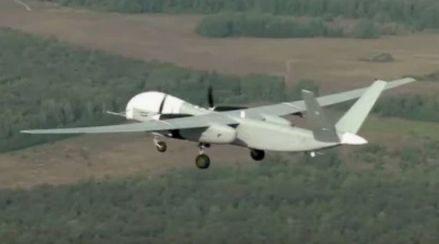
In Tatarstan, the newest Russian drone Altius-RU, which the Russians consider to be an analogue of the American MQ-9 Reaper, rammed a residential building.
Russian media reported this.
Details of drone crash on residential building in Kazan
Journalists write that Altius-RU rammed a local resident's house during a test flight.
Now watching
At the same time, military analysts at Defense Express believe that the cause of the crash was likely a loss of communication, as a result of which the drone lost control and gradually glided into the private sector.
Later, Russian Interfax, citing the Ural Aviation Plant, confirmed that the UAV began to have problems with satellite navigation, and then was allegedly disoriented by an unknown electronic warfare system.
This is not the first such case – in 2024, in the Donetsk region near Konstantinovka, the Russians lost an S-70 Okhotnik attack UAV.
The drone then lost contact and was heading for Ukrainian-controlled territory. Therefore, fearing that the Ukrainian military would capture it, the Russian Federation was forced to shoot down its drone.
Characteristics of the Altius-RU UAV
The loss of this drone was likely costly for Russia, as the Altius-RU, which is a version of the Russian long-term Altius project, began to be drawn up in 2011.
The first order for them was received only in 2021, and was taken by the Ural Civil Aviation Plant.
The quantity and terms were not specified, but the announced value of the deal reached about 7 billion rubles (experts at Defense Express calculated that in today's money we are talking about approximately 115 billion dollars).
According to experts, the characteristics of the Altius-RU drone include:
- flight time – up to 48 hours,
- height – up to 12 km,
- distance – 10 thousand km,
- weight – up to 6 tons,
- fuselage length – 11.6 meters,
- wingspan – 28.5 meters,
- combat load up to 1 ton,
- cruising speed 250 km/h.
However, its most important feature is its armament – it can even carry Kh-35U anti-ship missiles with a range of up to 260 km.
Its equipment includes an inertial-satellite navigation system and, probably, an unnamed radar station.
Possible equipment also includes a suspended radar with a phased array antenna and an optical sighting station.
The Russian Federation expected that Altius-RU would operate as part of the Russian Navy in the interests of groups of ships, submarines and naval aviation.
The main task of Altius-RU is reconnaissance, surveillance and support of naval forces.
Source: Defense Express, Interfax

